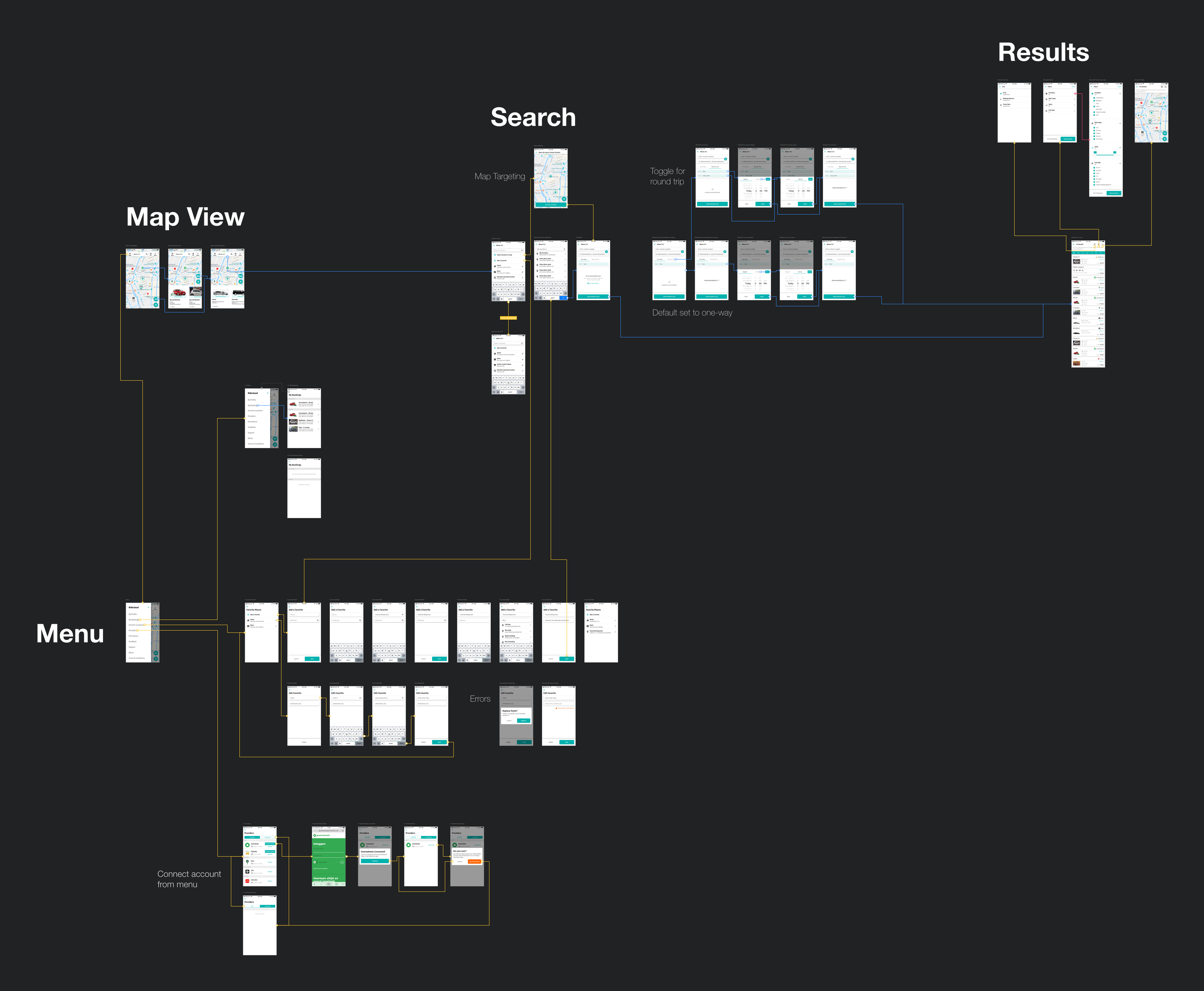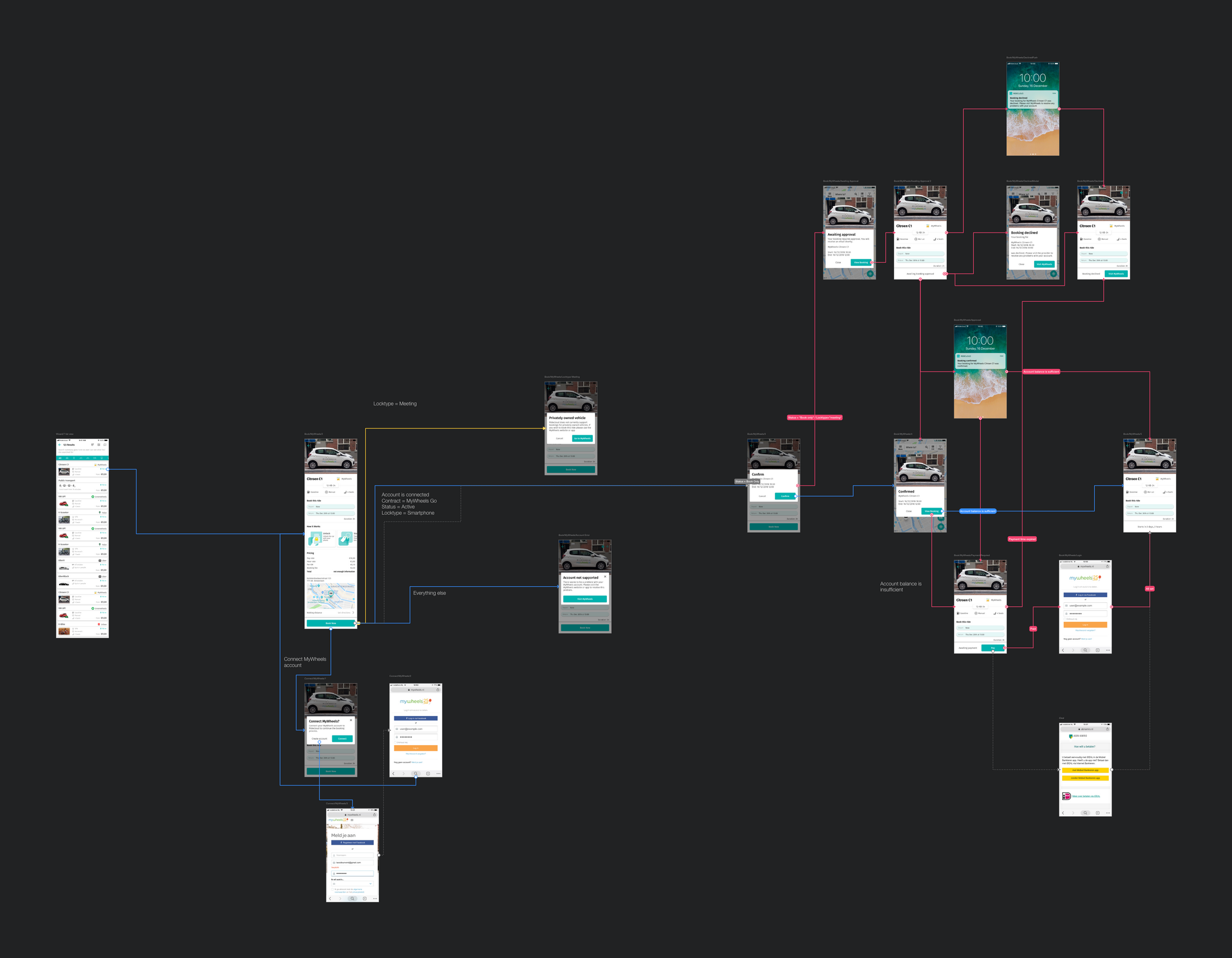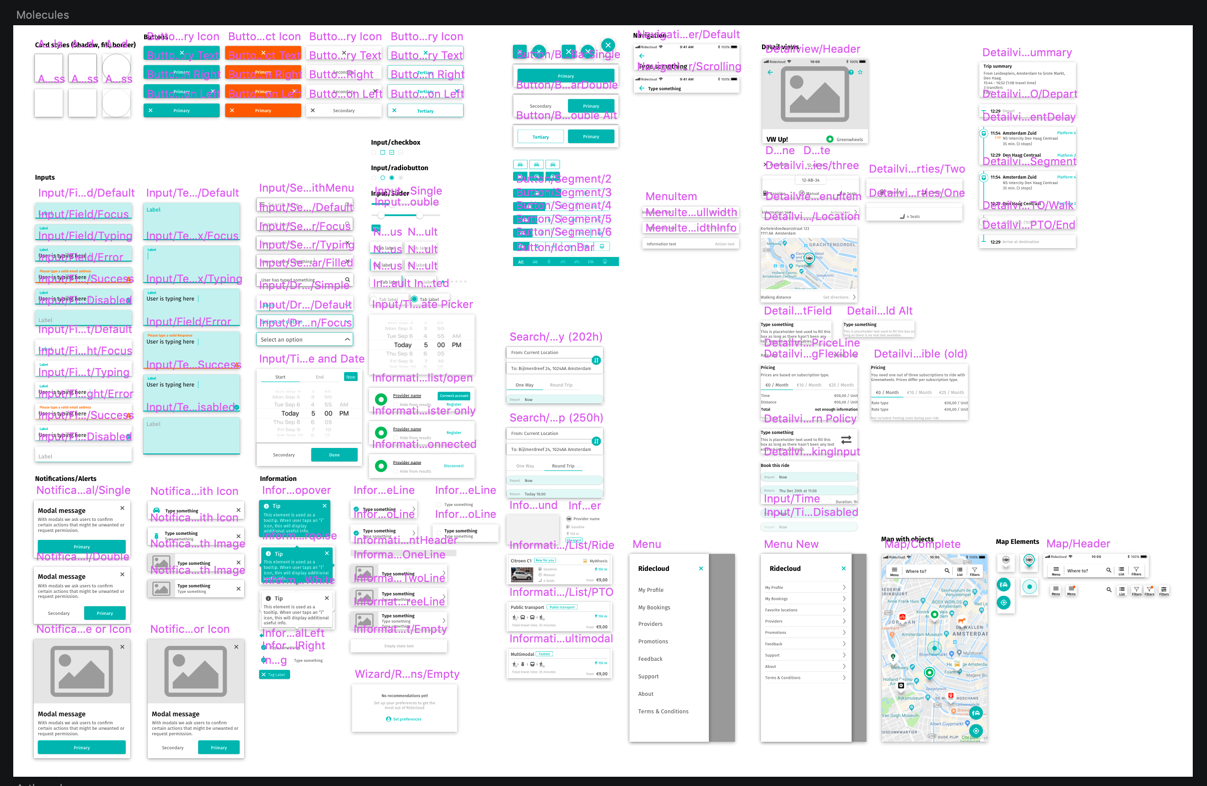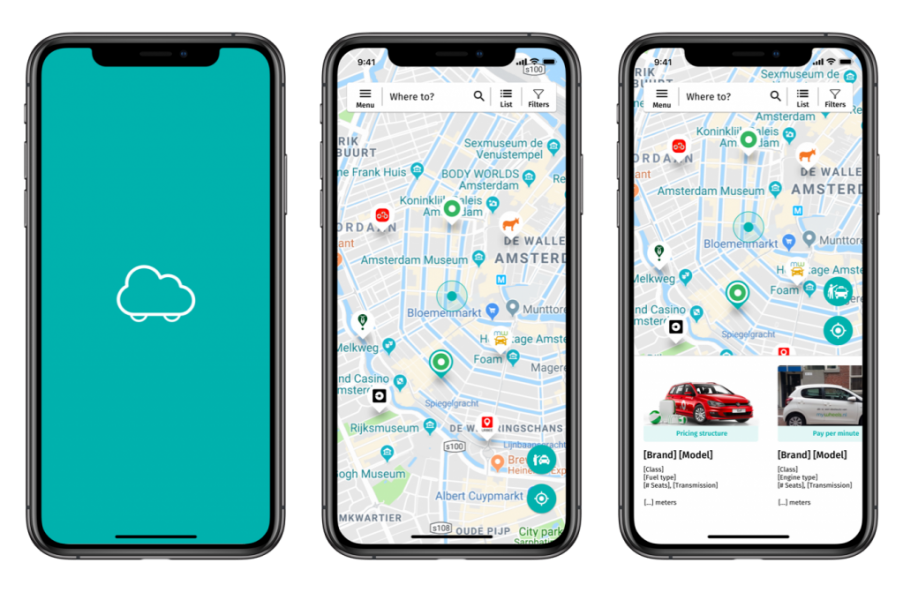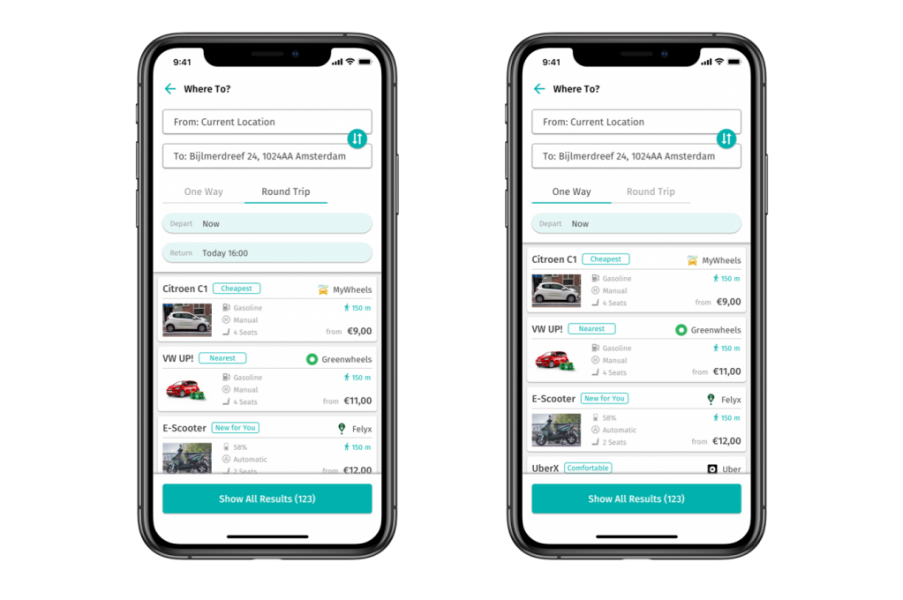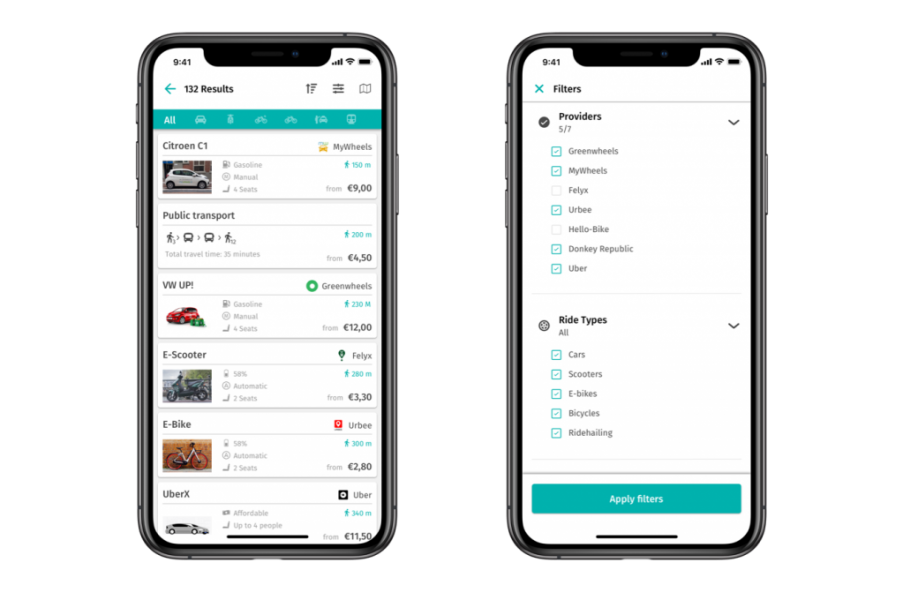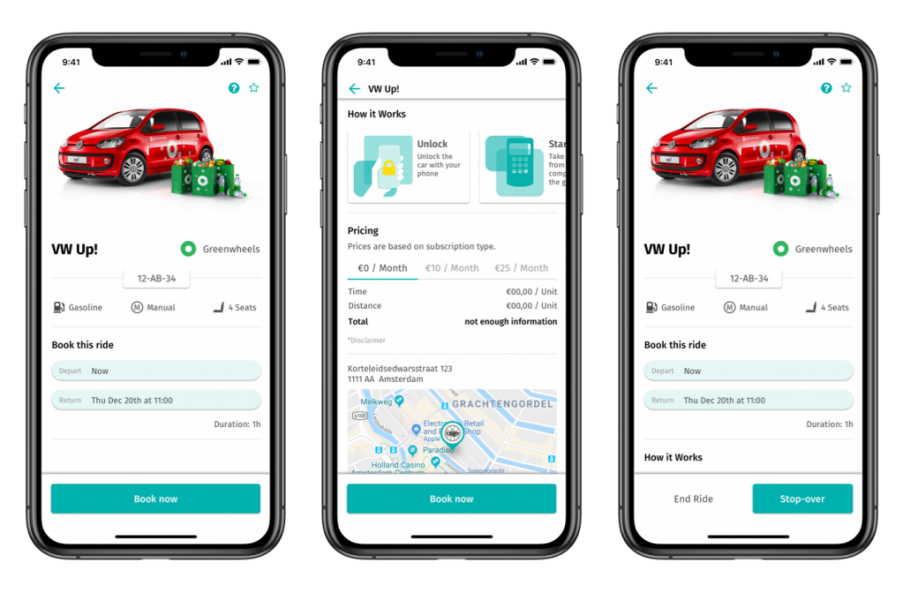
Always a ride nearby Creating a shared mobility aggregator @ING Labs
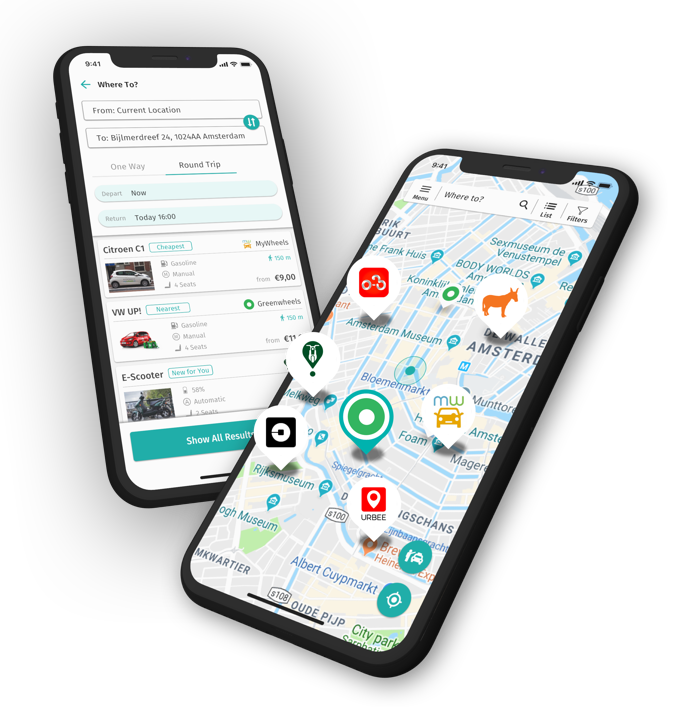
About Ridecloud
Ridecloud is a free app that brings all forms of shared mobility together: cars, (e-)bikes, (e-)scooters, taxis & public transport in one app.
This way you have full access and freedom without ownership. Wherever you are and you want to go, you can find a suitable ride nearby using shared mobility. Just browse, compare, book and off you go. Effortless and seamless, all in just one app.
Ridecloud for iOS was launched in July 2018.
Responsibilities
Having joined Ridecloud at the start, I was involved in all phases, from ideation, problem- and solution validation, to market launch and operation. My role included market research, ideation, experimentation, technical research, UI/UX design (and design system), user & functional testing, collaboration with developers and product strategy.
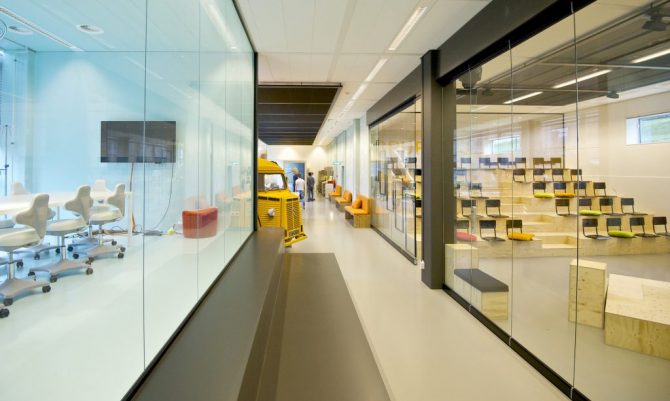
Background
Ridecloud is one of the initiatives inside ING Labs, ING Bank’s global accelerator. Labs provides an environment for exploration and development of new business opportunities. ING provides backing, expert guidance, a place to work, a community of ~80 intrapreneurs and countless other benefits for innovative projects.
We started in September 2017, and as team Carsharing we set out to discover the problems that occur when people do not want to own a car, but still need one every now and then. Soon we discovered that there are countless options to rent or share cars, but only when combined they provide a true alternative to ownership.
In this fragmented market we started building a mobile app that provides users with a single place for all their shared mobility needs, be it cars, scooters, e-bikes, you name it. As part of ING we found uniqueness in our ability to be independent and offer our users the best possible way to get around.
Process
As part of ING Labs, the team followed ING’s innovation methodology PACE: taking the best from Design Thinking, Lean Startup and Agile. The PACE process knows five phases: Discovery, Problem Fit, Solution Fit, Market Fit and Scaling.
Experimentation is key in each phase, and activities are focused on validating assumptions, ensuring that users are actually getting value, and only then start building the solution.
In early phases experimentation revolved around user interviews, surveys and A/B-testing with landing pages. After launching our app for iOS in July 2018, user data became one of the primary sources to inform our product roadmap and near term objectives.
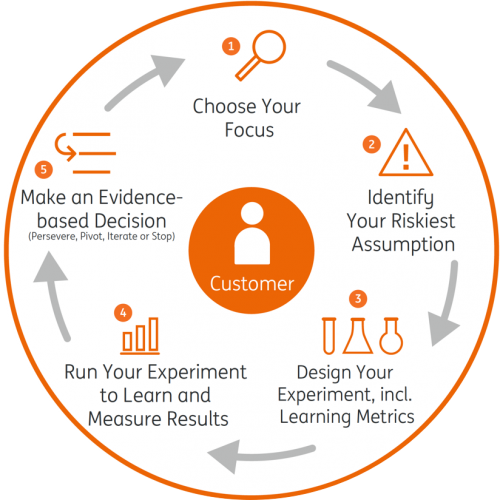
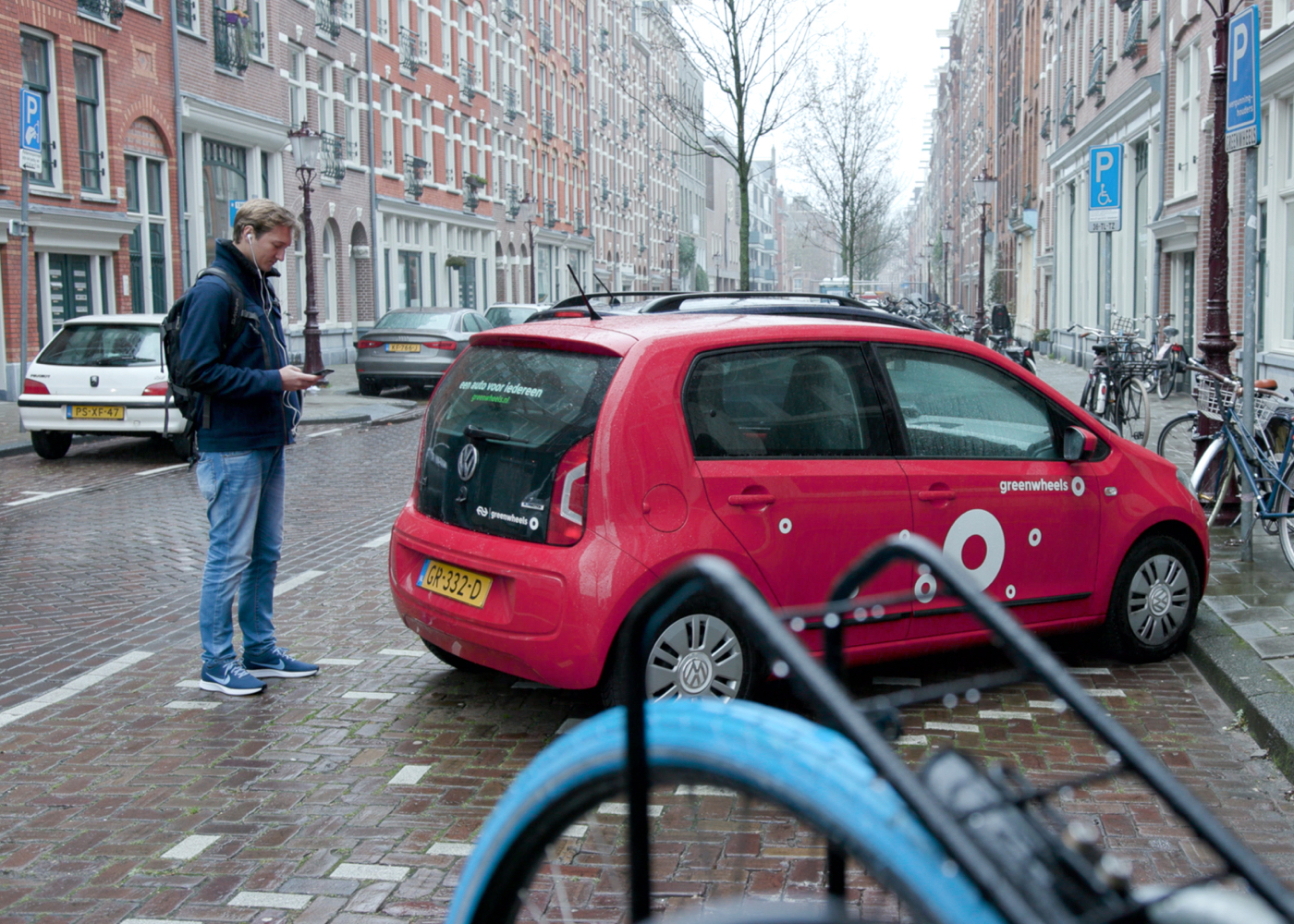
Discovery
Our main objective in the discovery phase was to interpret our field research and gain an understanding of target user/consumer lifestyle and address consumer needs and preferences; also to look into leveraging existing solutions and available technologies in product development.
Key challenges were to obtain evidence of problems in a relatively new market, where there was no indication of any dominant solution.
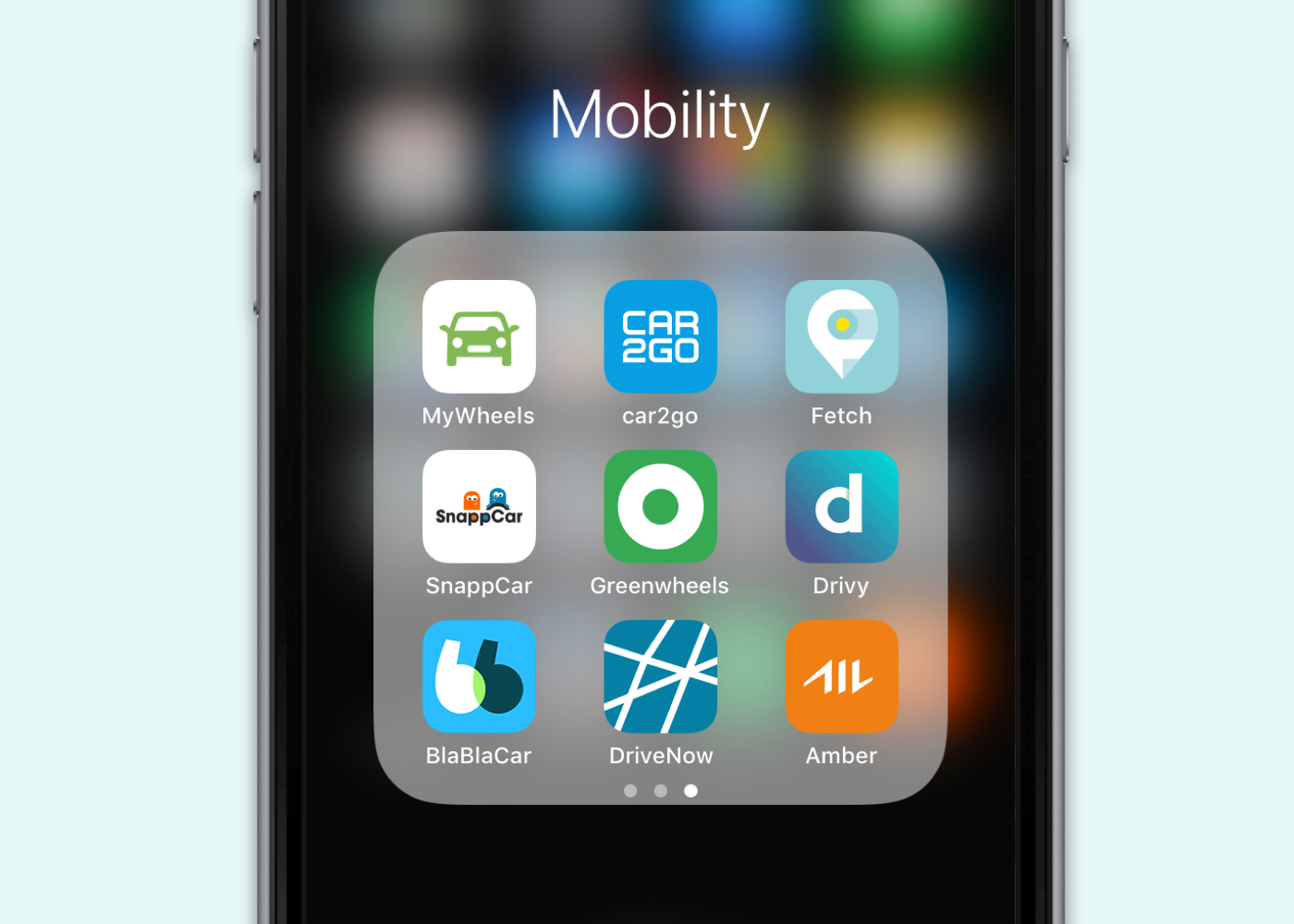
Problem fit
In problem fit we set out to validate the problems on both sides of the platform: users of shared mobility and shared mobility providers. To create a viable solution, efforts towards the supply and demand side needed to be balanced.
We started to get a grasp on the industry and the networks that exist within the shared mobility space. We discovered that the market was players in this young, fragmented market could truly benefit from each other through their complementarity.
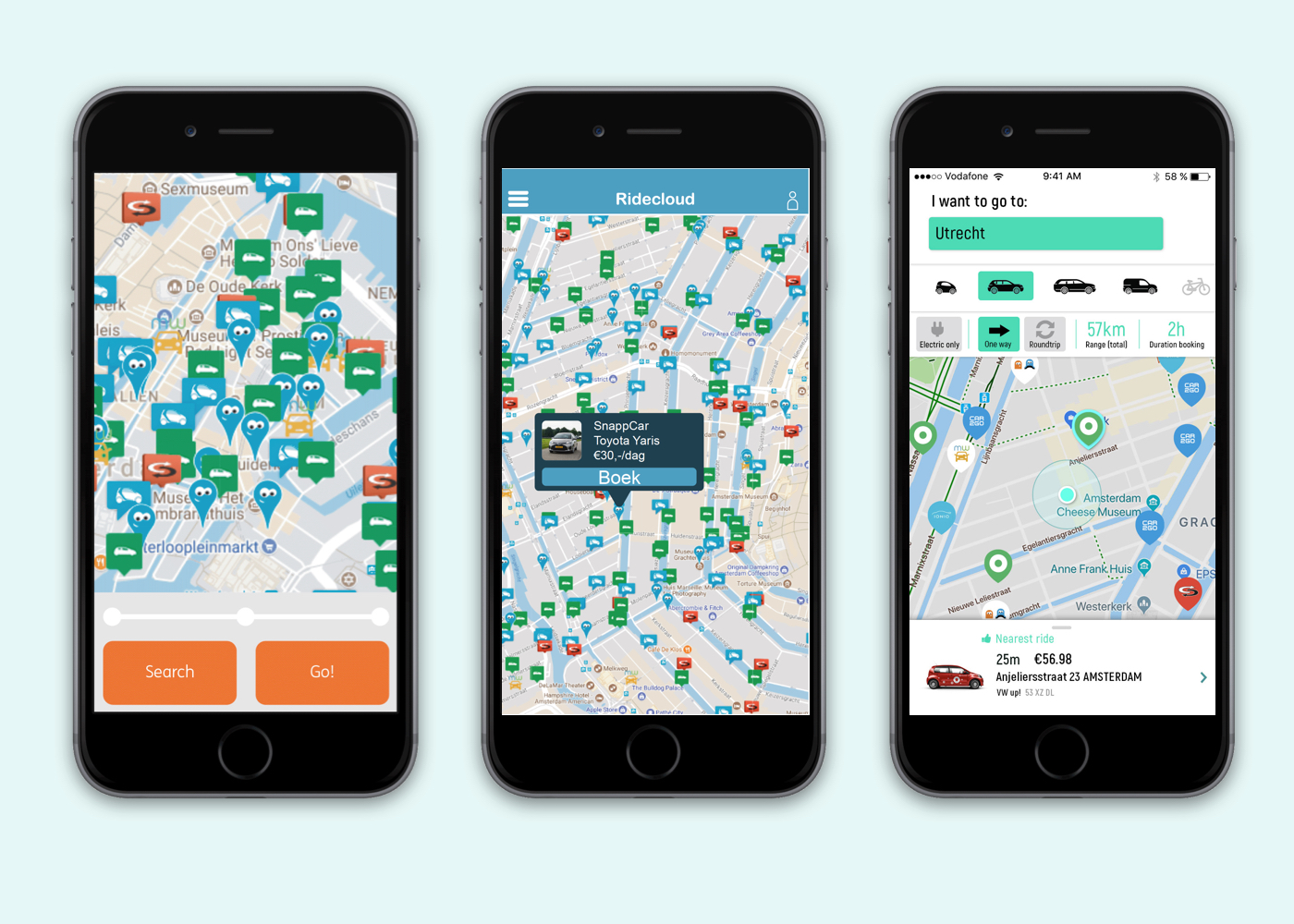
Solution fit
We set out to validate our intended solution with mockups. Initially we tested ideas during interviews and after consecutive confirmations progressed to quantitative methods like surveys.
In five different cities we tested our proposition with ads leading to landing pages, validating our solution with above average conversion rates.
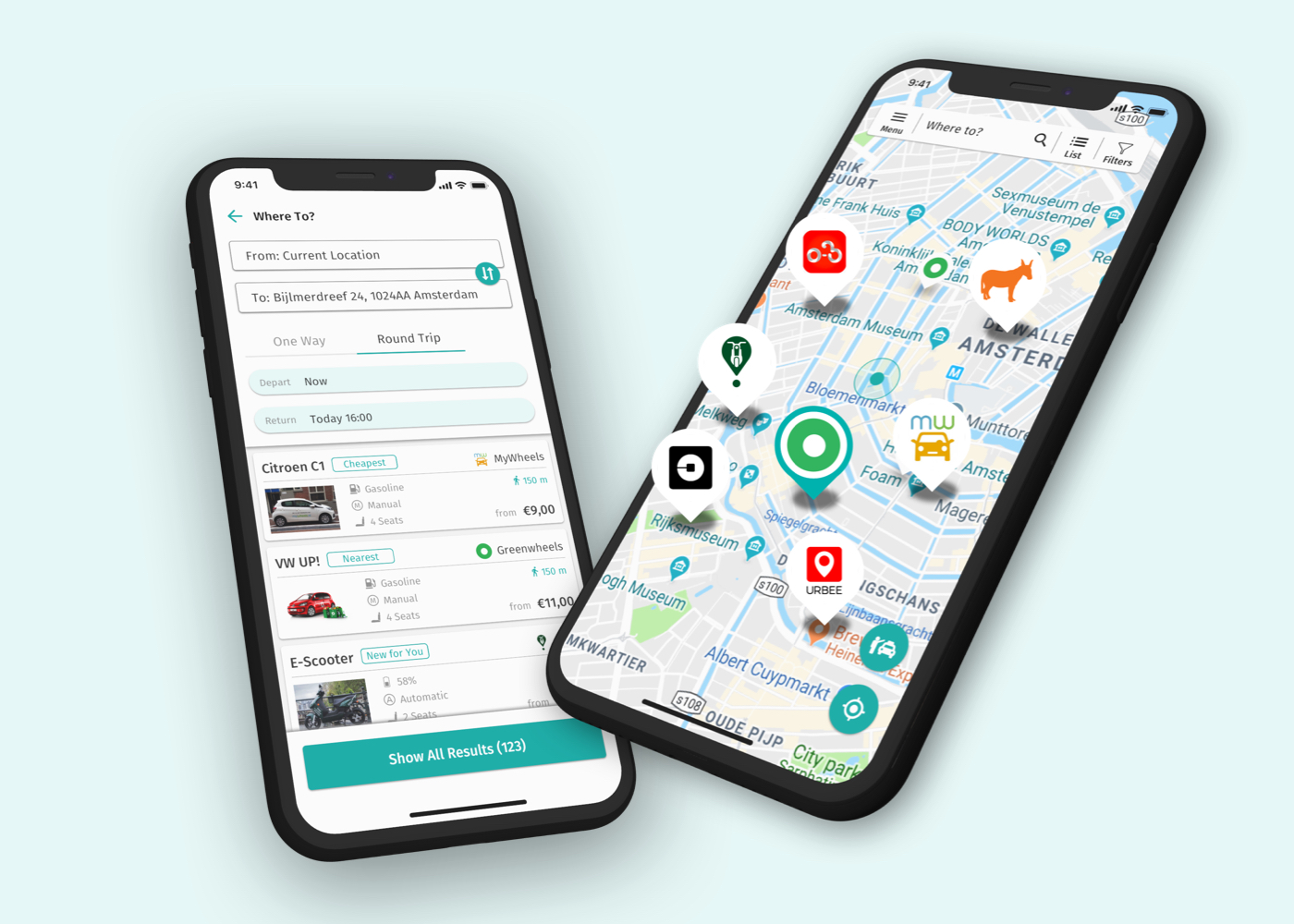
Market fit
During the development of the MVP one of the main objectives was to tailor our product to a broad range of usecases. People use cars for various different reasons, of which some overlap with bikes or taxis, and the other way around. The user experience was key, as we were aiming to replace apps/services that people already use on a regular basis.
With a launch on July 2018, the foundation was laid for further product development and growth of the user base.
UX
Ridecloud’s UX aims to solve several issues. Firstly, Ridecloud is intended as a substitute for existing apps, thus requiring a user experience that approximates the feature set and smoothness of existing services.
Secondly, Ridecloud is a comparison engine where users can find a wide range of transportation options. Different modes are suitable for different trips, so an expansive set of rules was created. Examples of these rules are that bikes are only shown for trips <20km, and round trip providers are excluded when the user is planning a one-way trip.
Users are also presented with a set of recommended options: cheapest, nearest, a mode of transport that is new to the user, and public transport.
From flows to UI
To create initial wireframes I conducted thorough analysis of the aggregated services’ applications and API’s. After carefully walking our developers through these drafts the wireframes were updated with new flows and final UI designs were created.
With our design system that was built from scratch (based on Atomic Design methodology), we found an efficient method of quickly composing new screens, while simultaneously enabling developers to reuse components where possible.
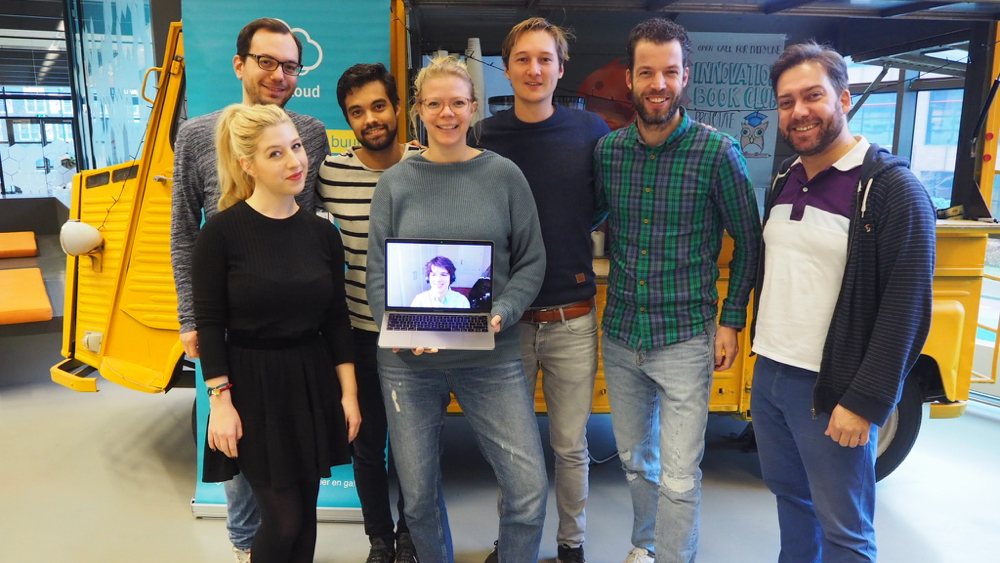
Team
The team started in September 2017. Two years later Ridecloud consisted of 10 highly motivated marketeers, designers and developers, building The Netherlands’ leading mobility-as-a service platform.
Don’t hesitate to get in touch if you want to know more about Ridecloud.
